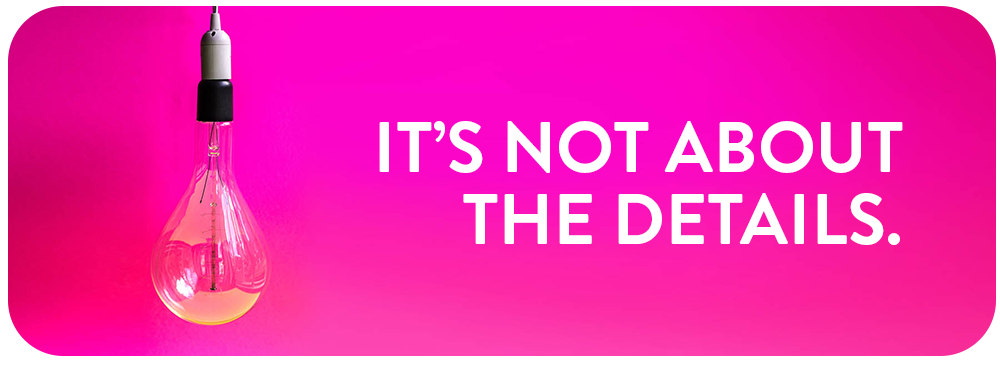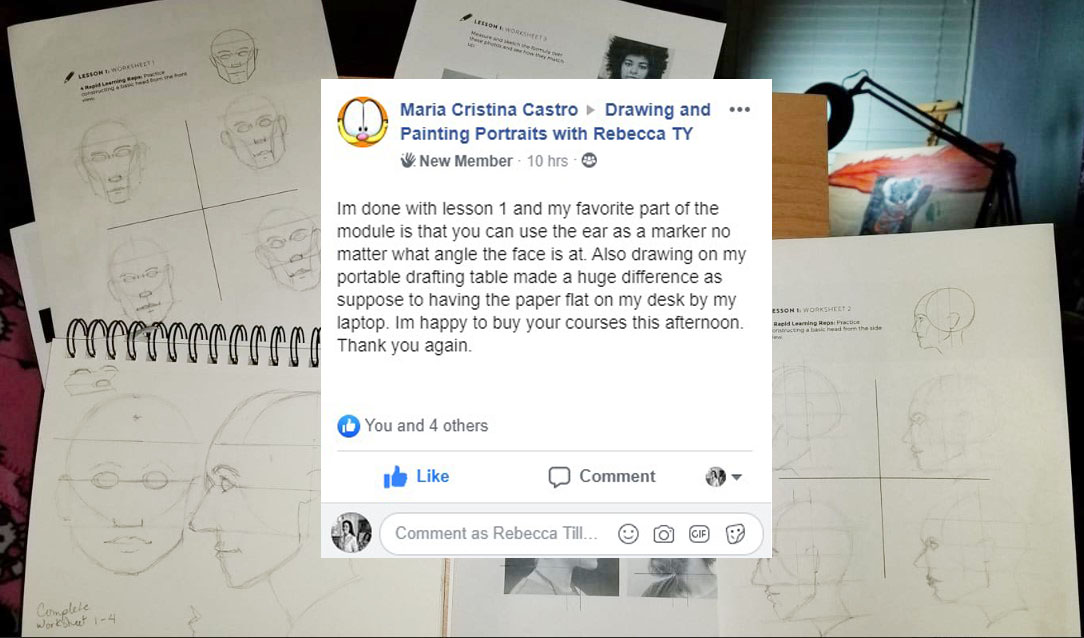PART 3: The Old Way Has To Go
They Don’t Actually Want You To Succeed
Published on July 1st, 2021.
by Rebecca Tillman-Young
HERE’S WHAT WE KNOW
Part 2 (of 6): [It’s Time We Called This Scam Out]
- Modern art education was never actually set up for us to be successful.
- Art teachers don’t actually teach you to draw portraits
here are two things I absolutely never want to hear after finishing a portrait:
“Who’s that supposed to be?”
and
“Ew, why does my [insert feature you probably struggled with for hours] look like that?”
Either one is pretty crushing, to be honest. There’s something really awful about spending hours of work, frustration, and struggle to create something from nothing…
…Only to have the person you’ve drawn look unrecognizable — even to themselves!
It might be even worse when you can tell that they feel a little offended by how you drew them.
Even if they’re too polite to say so, you can see it on their face. They silently think, “does my nose really look like that? What is my eye even doing?”
I’ve been there.
When I was new to portrait drawing, I can’t even tell you how many portraits I scribbled out, crumpled up, or threw away, embarrassed after receiving similar reviews.
Who needs that humiliation, right?
In fact, it’s that type of response that ends up killing most peoples’ creative impulses!
Here’s the unfortunate truth:
But here’s the deal… that’s just a symptom of the OLD way of learning to draw. The faulty ways we’ve already talked about.
And in the interest of saving you (and others) from giving up on your love of making art because of a few insensitive comments (and a lot of failed drawings), I want to share with you a better way…
A NEW way of learning to draw
If you’re anything like me, then you’ve probably made a few common mistakes in your drawings.
One of the most common I see is to start drawing your final portrait right from the start.
Let’s say, for instance, you start with a feature, like an eye.
You try to sketch it out perfectly before moving on to the next one. Then maybe you draw in the outline of the head, carefully paying attention to each contour and every detail of the shape, and filling in each of the features with that same care.
Other people like to start with the outline of the whole head, thinking that will help them place the features accurately.
But what if, half way through, you realize that that first eye was in the wrong place, or the angle was off? Or that you drew the shape of the head a little too big for the face you’ve put on it?
You’ve wasted a lot of time and effort because you were focusing on the wrong things. You set yourself up for failure.
That’s how I used to draw.
I was determined that with enough practice, I could overcome these obstacles.
But after years of practice, I still struggled to get accurate likenesses without using a grid, projector, or tracing paper.
Then I realized something.
Something so simple I couldn’t believe I hadn’t realized it sooner:

You read that right. It’s not about the details.
They don’t matter.
You can spend all day drawing the PERFECT eye, an exact replica of your subject in every way…
But if that eye isn’t in the right place, or doesn’t relate to the whole drawing correctly…the whole thing is doomed. It won’t look like them in the end.
Instead, I learned to start a drawing by focusing on structure and form, using quick, simple shapes to measure and place things…
All of a sudden, my drawings started to work WITH me instead of against me!
Let me share a quick video to show you what I mean:
After watching that video, you can start to see how powerful (and how simple) this way of drawing is…
By building the scaffolding first (the structure of the head), the hardest part of your drawing is already done!
All you have to do now is to go back through and start adding in the important details.
Are you starting to see how this new way of approaching a portrait is SO MUCH FASTER and easier than the old way?
When you master the basic measurements, really understand the structure of the head… When you’re able to nail those proportions quickly and easily…
Everything becomes so much easier!
If you can do that, learning to capture an accurate likeness is a breeze!
You don’t need grids or tracing paper or any other crutch to keep your drawings looking accurate.
Those methods are a relic. They solve symptoms, not the root problem. And they won’t teach you to draw natural, lifelike portraits.
Once you master the structure of the head and understand how it functions as a 3D form, YOU have control over your drawings. You’re not a slave to formulas or grids… AND you can draw lifelike portraits in a fraction of the time.
You’ll be able to emphasize the features you want and push back the ones that don’t. You’ll be able to start making ART instead of just frustrating sketches.
When you’re working the way I used to, trying to create a perfect replica of your reference without paying attention to the structure… All you end up with is poor imitations of a photo that already exists.
They might sort of look like your subject… But they just don’t really hit the mark.
When I started sharing this with my students, they saw TREMENDOUS results immediately!
Here’s what Lynn Heims said after I gave her some lessons to do:

And how about this post from Maria:

And here’s what Julie had to say after going through the course I put together (Lifelike Portraits in 21 Days):
When was the last time YOU felt so excited about your drawings that you stayed up all night working on them?
I was thrilled to hear how much the lesson helped Lynn, Maria, and Julie.
Here’s the truth: when you have the confidence to TRUST the process… to take the time to learn this stuff (which is pretty easy to master, actually), you’ll see a quantum leap in your drawing skills.
You won’t have to stress about whether the eye you spent 30 minutes perfecting is in the right place or not…or whether the nose is facing the wrong direction compared to the rest of the face…
Are you guys as excited as I am by this stuff?
This is such a powerful learning tool. It changes the game completely, giving you the tools you need to create real art, and to do it WITHOUT all the stab-me-in-the-eye-with-my-pencil frustration that comes with the old way of drawing.
And that’s just the first step.
SUBTEXT
- Drawing lifelike Portraits is easy when you can nail the structure of the head.
- You don’t have to have wonky looking features in your portraits ever again.